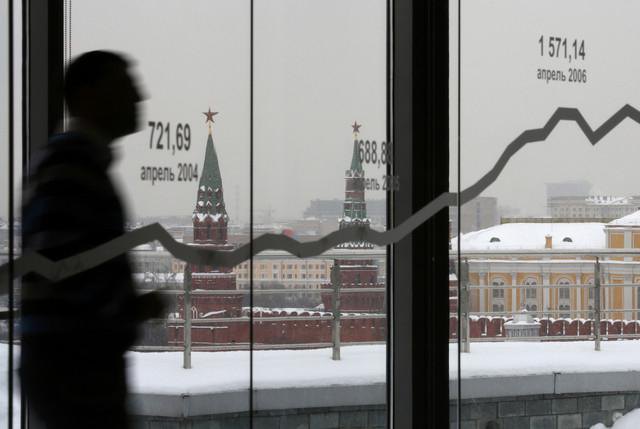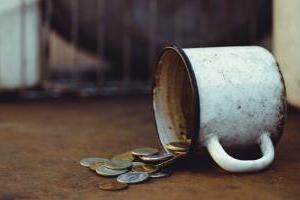PJSC Moscow Exchange MICEX-RTS is a trading platform that organizes trading in stocks, bonds, derivatives, currency, goods and some other instruments. This is the only multifunctional exchange in Russia and the largest in the CIS. It was formed as a result of the takeover in 2011 of the then largest MICEX exchange of the second largest platform - RTS.

The history of the MICEX
The Moscow Interbank Currency Exchange (abbreviated as MICEX) was established in 1992 to conduct currency auctions. A little later, trading on short-term bonds of the state loan was launched on the site, and a few years later - shares of corporations. Since 1997, the exchange has been calculating the MICEX index based on quotes of liquid securities of Russian companies. By 2011, securities of more than 750 issuers were present at the MICEX. The exchange accounted for 90% of Russia's turnover in stock trading and almost the entire turnover in bond trading.
Formation of the RTS Exchange
RTS - the Russian trading system - was organized in 1995 as a platform for the conclusion of OTC transactions. Based on the value of liquid shares quoted on the MICEX, RTS began to calculate its own stock exchange index. In 2000, having received a license, it became a stock exchange.

In 2001, an urgent FORTS section was opened here - Futures and options Rs. By 2011, FORTS was the only liquidity platform in Russia where derivatives were traded.
Friendly takeover
Thus, two exchange trading centers were formed in Russia - RTS and MICEX. The difference between the two was that the MICEX was the leader in currency and stock trading, and the RTS - in futures and options. Exchanges to some extent competed with each other, while the RTS, rather, “defended”. The issue of combining the sites was raised in 2010, but the parties could not agree.
However, they had to do this after the release of the relevant decree of President Medvedev. It was at the end of 2010, and already at the beginning of the next, the parties returned to negotiations. In February 2011, it was decided to merge exchanges. So, the MICEX swallowed RTS, as a result of which the Moscow Exchange appeared. This should have been a step towards the creation of a world-class financial center in the country.
In 2013, the new joint-stock company conducted an IPO - issued shares and placed them on its own stock market. In 2015, the company became known as: Public Joint Stock Company Moscow Exchange MICEX-RTS.
Sections and Tools
There are several sections in the structure of the united exchange: currency, money, derivatives, stock and commodity. The share of each segment in the total turnover of the exchange can be estimated in the following table.
| Trading volume in different sections of the Moscow Exchange in 2015 | |
| Section | Amount (billion rubles) |
| currency | 310 837 |
| monetary | 213 786 |
| urgent | 93 713 |
| stock | 20 556 |
| commodity | 117 |
The stock section trades in stocks, bonds (including Eurobonds), depositary receipts, investment shares index funds, mortgage participation certificates. The derivatives section of the Moscow Exchange MICEX-RTS offers participants futures for securities, indices, interest rates, currency pairs, precious metals, oil, and raw sugar. In addition, options are presented here, the underlying asset of which are some of the futures. On foreign exchange market currency is traded in the USA, Great Britain, China, Hong Kong, as well as a single European currency.In addition, the currencies of Russia's neighbors in the CIS are traded here: the Ukrainian hryvnia, the Belarusian ruble, and the Kazakhstan tenge. In the money section, REPO transactions are carried out - loans secured by securities. Gold, silver and wheat are traded on the commodity market.
Indicators
The main indicators of the Moscow Exchange remain the MICEX and RTS indices. The first of them is the main one - it is precisely by its significance that a decision is made to suspend trading in shares in cases provided for by law. Both indices are calculated based on the prices of 50 shares issued by the largest Russian companies (as of December 18, 2012). Recalculation of indicators occurs automatically during the implementation of each transaction with shares included in the database. Both indicators are weighted by capitalization and have a common calculation methodology. The only difference between the RTS and the MICEX is that the first index is calculated in US dollars, while the second is calculated in Russian rubles.

In addition to the main indexes, the exchange calculates many others. For example, the blue chip index is calculated based on the 15 most liquid stocks of Russian companies. In addition, stock indices are calculated based on stock quotes: oil and gas, energy, banks and finance, and many others.
Some facts about a single exchange
The trading volume of the stock section of the exchange declines for the fifth year in a row. From 2011 to 2015, the turnover of stocks and bonds fell by almost 3 times. But the futures market, on the contrary, is growing. In 2015, the trading volume on the derivatives section of the Moscow Exchange MICEX-RTS grew by more than half. The bulk of this growth was due to an increase in interest in trading futures on currency pairs. At the end of last year, the derivatives section of the exchange (FORTS) outperformed the stock section 4.6 times in terms of trading volume.
In contrast to the stock markets of developed countries, the commodity segment of the Moscow Exchange is still underdeveloped. Last year, trade was started here. forward contracts for wheat, and before that, only gold and silver were traded from goods. But there is also a positive trend - the volume of trading in precious metals in the commodity sector of the MICEX-RTS exchange in 2015 increased 5 times.

Consolidation of trading floors fully complies with global trends in the development of exchange business. But were the expectations of the supporters of the MICEX and RTS merger justified? This question can be answered only after years. Yes, the Moscow Exchange cannot yet compete with global industry giants. Nevertheless, by combining the vast trading experience of the two sites, it gained great potential for further development.








